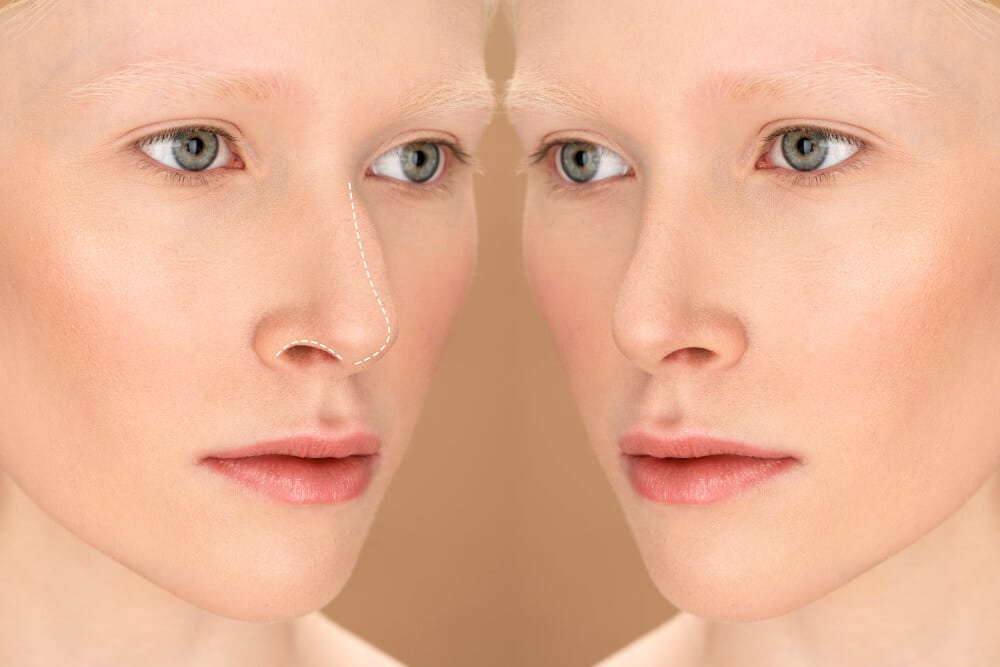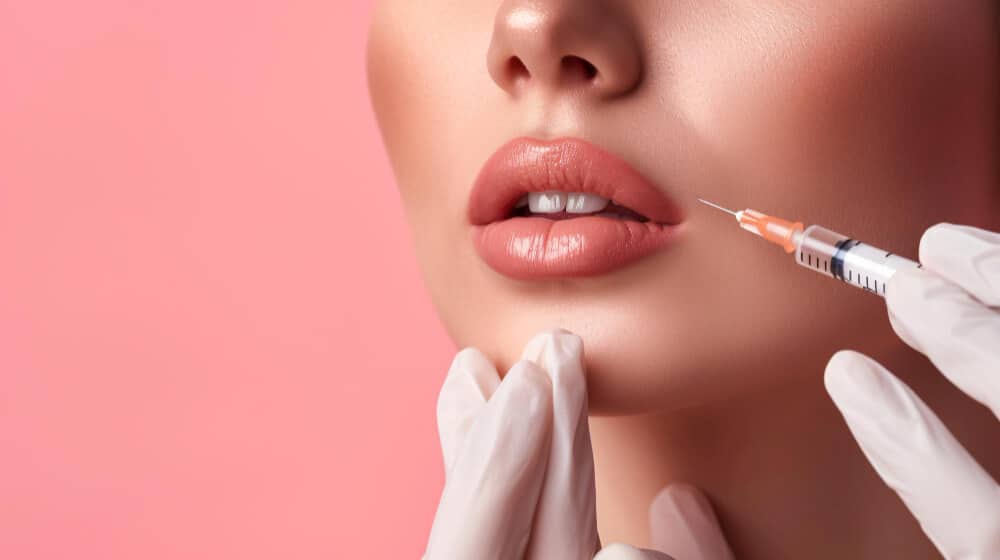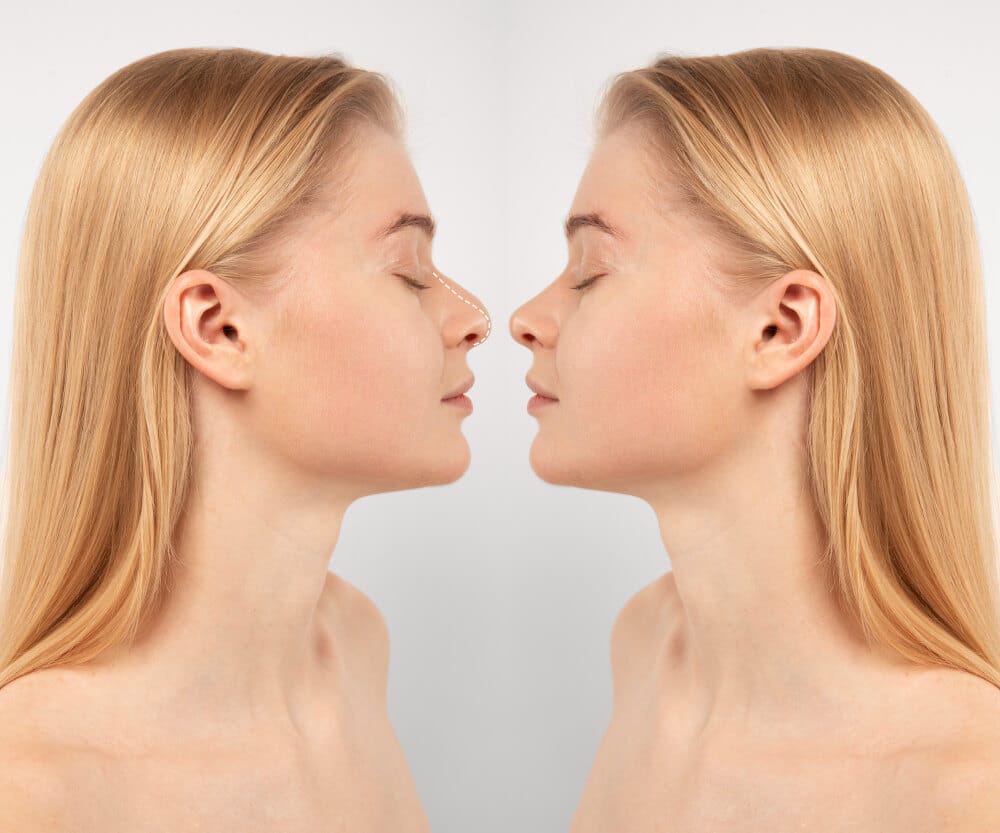
Stylage and Restylane are two popular types of dermal fillers, but what sets them apart? In this blog post, we’ll explore the differences between Stylage and Restylane fillers, including their ingredients, uses, and potential side effects.
Dermal fillers have become a cornerstone in aesthetic medicine, offering transformative results with minimally invasive procedures. With over 3 million dermal filler injections conducted worldwide in 2020, the demand for these treatments shows no signs of waning.
Among the plethora of options available, brands like Juvederm, Profhilo, Saypha — noted as some of the best dermal fillers of 2021 — and notably Restylane and Stylage filler types stand out.
Stylage broke onto the scene in 2009, distinguishing itself by incorporating mannitol, a natural antioxidant that potentially reduces swelling and prolongs the effects of treatment.
Conversely, Restylane prides itself on its diverse range from Galderma which includes products customised to specific needs such as Kysse for lips and Lyft for cheeks.
In aesthetics precision matters; knowing your fillers can make all the difference and choosing reputable sources to order Stylage products wholesale.
Stylage fillers contain mannitol, combating aging by replenishing volume and preventing premature aging signs. Mannitol plays a key role in Stylage fillers, acting as a powerful natural antioxidant. This ingredient helps protect the body from free radicals, which are harmful molecules that can damage cells.
These products address various needs with or without the addition of pain relief through lidocaine. Their design covers specific formulations such as Stylage S, M, L, XL to meet diverse aesthetic goals efficiently. Also there are Special Lips, Hydro, and Hydromax – which are customised for different areas and concerns.

Continuing from Stylage fillers, Restylane offers a unique approach with its range of products.
Restylane uses unique technologies to create a wide range of products.
The clever science behind Restylane lets this filler last longer once it’s in the skin—between 9 and 18 months.
Restylane doesn’t just stick to one kind of product; it has many options like Kysse for lips, Volyme for cheeks, Lyft for lift and contour, Refyne, Defyne for lines and wrinkles, Lyps again for lips but with a different effect, and SUBQ for deeper facial areas.
Stylage and Restylane fillers meet a wide range of needs, from lip enhancement to facial contouring. Stylage has unique options like Special Lips for fuller lips and Hydromax for deep skin hydration.
Restylane answers different calls with Kysse for natural-looking lips and Refyne to ease moderate wrinkles.
Doctors often choose Stylage for lip enhancement and facial feature correction.
Lips gain volume and definition, thanks to Stylage fillers; wrinkles find themselves smoothed out. The presence of mannitol enhances these results and promotes longer-lasting outcomes by protecting against rapid degradation.
So, if a patient desires fuller lips or aims to correct certain facial features without resorting to more invasive procedures, Stylage offers an effective solution with its innovative formula.
Restylane fillers serve many purposes in enhancing facial features. They smooth wrinkles, add volume to lips, and restore facial contours. Products like Restylane Kysse focus on the lips for a fuller look while Lyft is great for cheek augmentation.
Refyne and Defyne are perfect options for smoothing laugh lines. For those wanting a more defined chin or jawline, Lyps and SUBQ come into play.
Both Stylage lasting 12-18 months and Restylane between 9-18 months, offer customised solutions across various areas, ensuring long-lasting beauty corrections.
Mannitol in Stylage fillers helps keep the body’s own hyaluronic acid from breaking down too quickly. This makes these fillers work well for longer. On the other hand, Restylane fillers stand out for how long they last – between 9 to 18 months.
This feature has made them very popular among users looking for a reliable option that won’t need frequent touch-ups.
Both options show good results but their lasting power comes down to what’s inside and how each person’s body reacts. Since Mannitol slows decay, Stylage might stay effective for a generous span, aligning it closer to Restylane’s performance range despite different compositions.
The choice between them often rests on personal treatment goals and how long someone wants the effects to last.

When comparing the effectiveness and longevity of Stylage and Restylane fillers, it’s essential to consider the individual’s metabolism, lifestyle, and the specific area of treatment.
In general, both Stylage and Restylane fillers are known for their effectiveness in achieving natural-looking results that can last for several months to a year, depending on the product used and the patient’s response to treatment.
Several factors can change how well Stylage and Restylane fillers work and how long they last. The type of filler plays a big role.
Each person’s skin reacts differently to fillers too. Thick skin or areas that move a lot might break down the filler faster.
The skill of the doctor matters as well. A more experienced doctor can place the filler in just the right spot for it to look good and last longer. How much filler is used also impacts its longevity; sometimes, less is more for a natural look that lasts.
Lastly, taking care of the skin after getting fillers by the patient, like staying out of the sun and using good skincare products, helps keep the results longer.
Stylage and Restylane fillers might lead to redness, swelling, and bruising where injected. Allergic reactions are rare but can happen with both types of fillers. Using products with lidocaine can ease pain during the procedure but doesn’t cut down on other side effects.
Patients need to know what could go wrong before picking Stylage or Restylane for their needs.
Patients might notice mild swelling, redness, and bruising at the injection site after using Stylage fillers. These are common reactions that usually go away in a few days. Mannitol, found in Stylage, helps reduce these side effects by fighting free radicals.
This antioxidant action minimises downtime and protects the skin from premature ageing.
Some people might feel discomfort or tenderness around the treated area. Rarely, there could be slight itching or small bumps under the skin that resolve with time. Since mannitol aids in slowing down the decomposition of natural hyaluronic acid in cells, it also helps in enhancing recovery and extending the filler’s durability among these common side effects.
Restylane fillers often lead to swelling, bruising, and redness at the spot where the doctor puts them in. People might also feel tenderness around this area. After getting these fillers, some folks find they itch or feel pain there.
They could notice their skin looking different in color too.
A few people see small lumps or bumps under their skin with Restylane treatments. This can happen right after the procedure. These side effects are quite usual and typically go away on their own after a little while.
Stylage and Restylane fillers both have risks like allergic reactions, infection, lumps, plus over or under correction.
Doctors carefully consider a patient’s history to lessen risks. Knowing the possible side effects helps in making an informed choice on whether Stylage or Restylane is right for the patient.
It’s key to have all the facts straight to avoid unwanted outcomes from these treatments.
Choosing between Stylage and Restylane fillers means looking at risks and rewards. These fillers, both packed with hyaluronic acid, offer ways to refresh a patient’s look.
Stylage fillers are unique because they include mannitol, an antioxidant that helps prevent swelling. This makes them stand out from Restylane fillers which use a special way to connect hyaluronic acid.
Stylage also offers products with or without lidocaine for comfort during treatment.
Restylane provides a wide range of options like Kysse and Lyft, focusing on long-lasting results between 9-18 months. This variety meets different needs, whether for lips or cheeks.
Both brands have their special touches but choosing depends on the desired outcome and longevity of results.
Stylage uses a mix of ingredients for hydration, while Restylane focuses on volume.
Yes, both can make your lips look fuller.
Stylage might stay a bit longer than Restylane, but it really depends on the person.
Both can cause swelling or redness where you got the shot.
Restylane is often picked for smoothing out those little lines.
Stylage hyaluronic acid dermal fillers containing mannitol https://www.ncbi.nlm.nih.gov/pmc/articles/PMC3810198
Comparison of dermal fillers
https://www.jaad.org/article/S0190-9622(22)02998-X/fulltext
Join our newsletter to receive latest news and offers

Medicle MD Ltd
Reg. Number: 14317237
Address: 27 Old Gloucester Street,
WC1N 3AX London,
United Kingdom
Our website is intended solely for people who use medical devices, such as dermal fillers, as professionals. It may contain product advertisements targeted only at such people. To enter Nu Derma Supply, please confirm that you are such a person (e.g. a medical professional, cosmetologist, service technician, etc.).